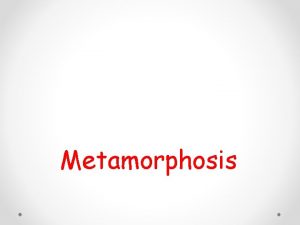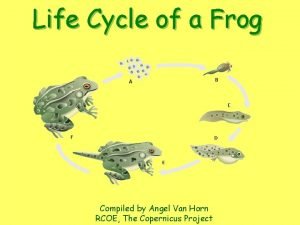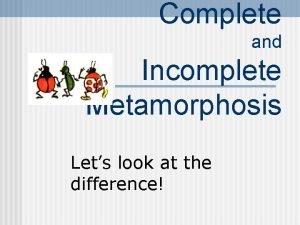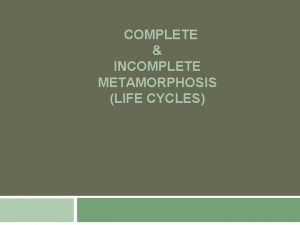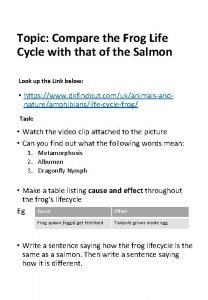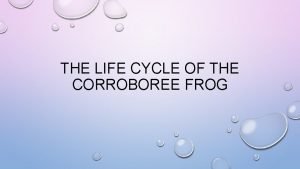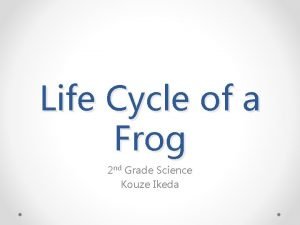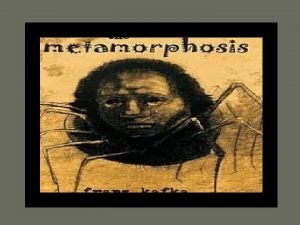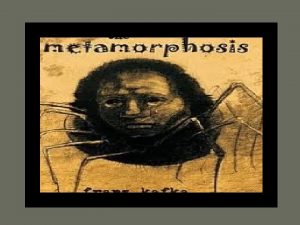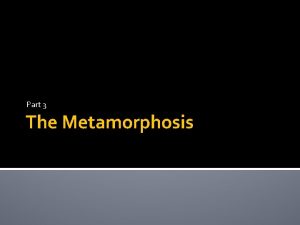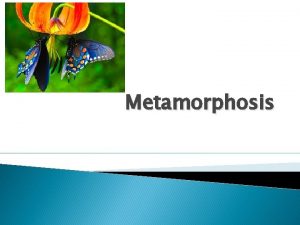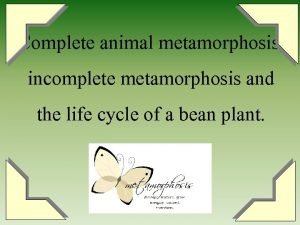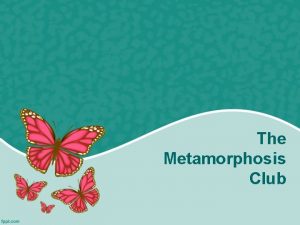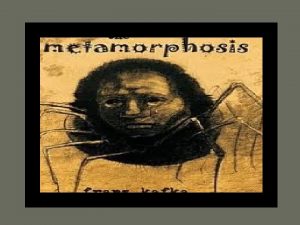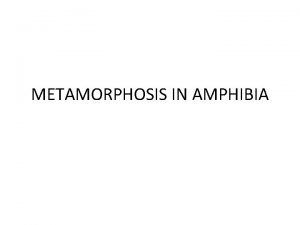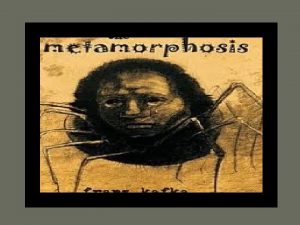Metamorphosis in Frog Life Cycle of a Frog












- Slides: 12

Metamorphosis in Frog

Life Cycle of a Frog Compiled by Angel Van Horn RCOE, The Copernicus Project

Morphological changes in the organization of Tadpole of frog. • Changes can be categorized under three categories. • A. Regressive changes ie organs or structures necessary during the larval life but no longer needed in the adults are either altered or may disappear completely. • 1. The long tail with dorsal and ventral fin folds of tadpoles are reabsorbed without a trace

• This is affected by autolysis • 2. The internal gills are closed and peribranchial cavities disappear and the opercular folds fall off. • 3. The horny rasping teeth of perioral disc are shed with larval skin. • 4. Lateral line system of sense organs present in tadpole skin disappears

• 5. The cloacal tube becomes short and reduced.

B. Progressive Changes • 1. There is progressive development of limbs. • . Hind limbs increase in size joints develop. • . Fore limbs develop under the cover of operculum membrane break through it to exit. • 2. The middle ear develops in connection with first pharyngeal pouch. • The tympanic membrane develops to receive sound vibrations.

• 3. The eyes protrude on the dorsal surface of head and develop eye lids and nictating membranes. Gill arches become modified into hyoid apparatus. • 4. the tongue develops from the floor of the mouth. • 5. With change in organs of respiration corresponding changes take place in the vascular system.

• The afferent and efferent develop direct connections and more blood passes into the lungs. The heart becomes three chamberd. Aortic arches take the pattern of adult frog.

Following organs function both in larva and adult but change their differentiation during metamorphosis • 1. Double layered epidermis becomes cornified • Multicellular mucous and serous glands develop. Pigmentation of skin is changed • 2. Intestine which is long is shortened hebivorous to carnivorous. coils become straightened. • 3. The larval pronephric kidney is tranformed into mesonepfric kidney of adult

• 4. The brain becomes more highly differentiated.

Physiological and biochemical metamorphosis • 1. There is shift from ammonotelism to ureotelism. The metamorphosed frog excretes most of its nitrogen in the form of urea and only a small amount as ammonia. • 2. The enzyme system of liver becomes more eloborate in relation to biosynthesis of urea from bicabonate. • 3. The visual pigments of tadpole prophyropsin shifts to rhodopsin

• 4. Autolysis of gills and tail is affected by amoeboid macrophages by their lytic enzymes like cathepsin. • Degrowth during metamorphosis feeding is suspended and there is loss of weight.
 Complete metamorphosis animals
Complete metamorphosis animals Getting nerdy science answer key
Getting nerdy science answer key Frog life cycle project
Frog life cycle project Complete life cycle of insects
Complete life cycle of insects Metamorphosis
Metamorphosis Complete and incomplete metamorphosis
Complete and incomplete metamorphosis Aquatic vs terrestrial
Aquatic vs terrestrial Life cycle of a frog writing task 1
Life cycle of a frog writing task 1 Corroboree frog life cycle
Corroboree frog life cycle Tadapole
Tadapole Earthworm anatomy answer key
Earthworm anatomy answer key Metamorphosis surrealism definition
Metamorphosis surrealism definition Metamorphosis definition
Metamorphosis definition
